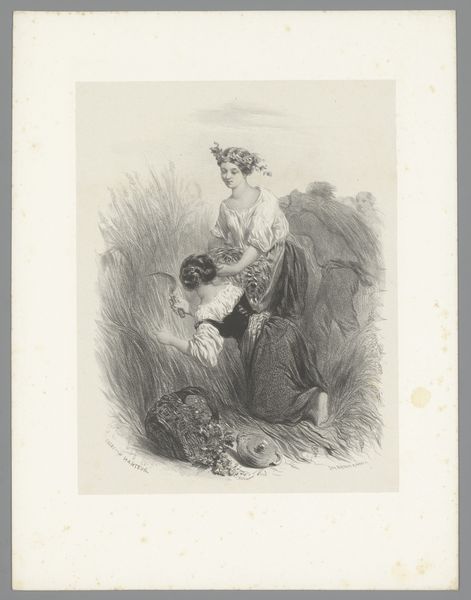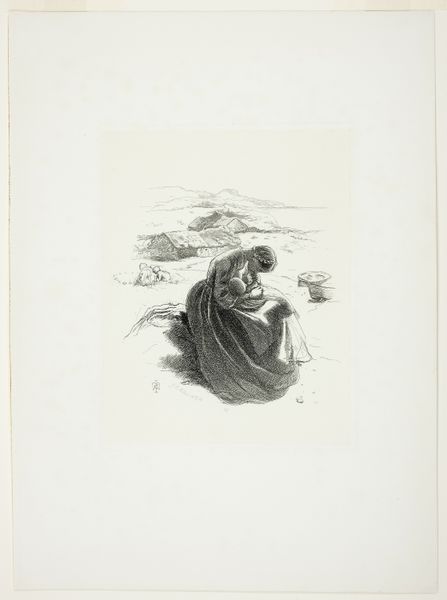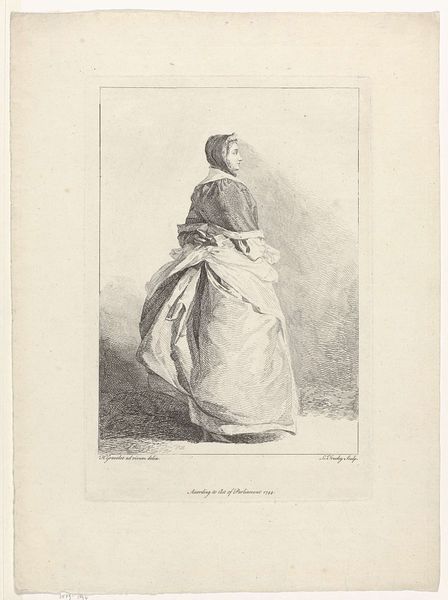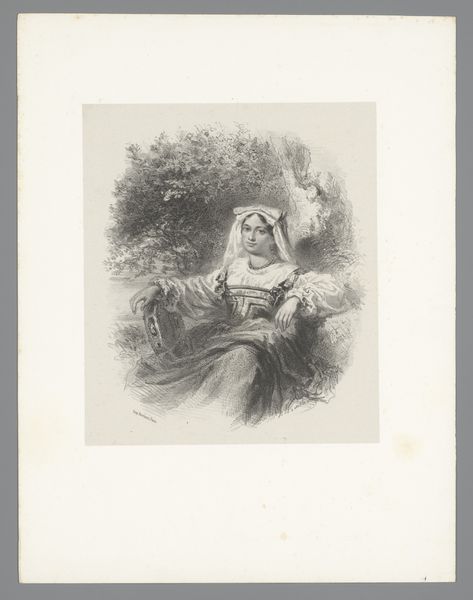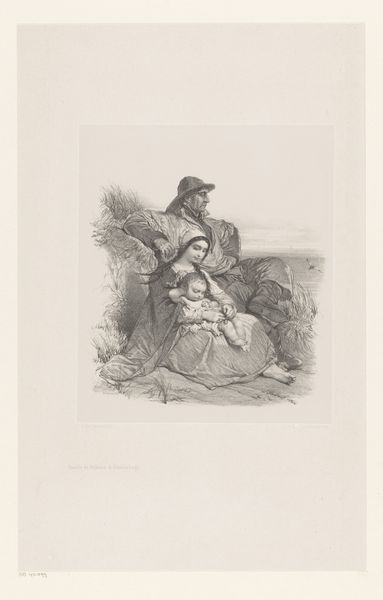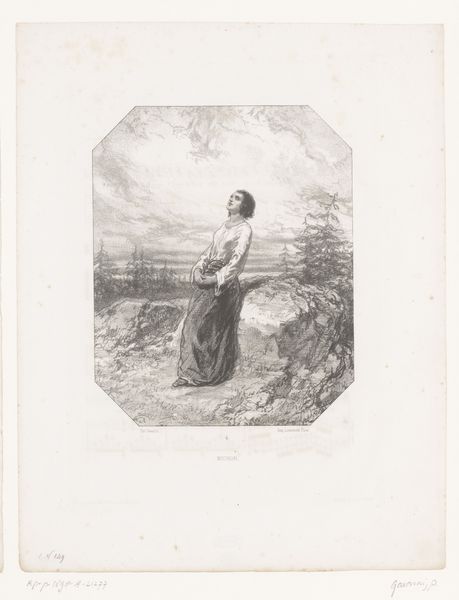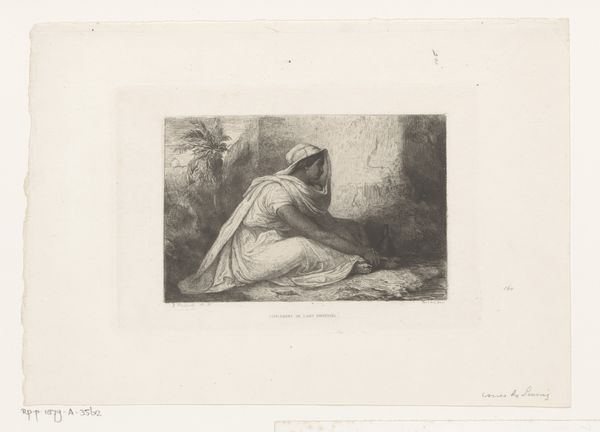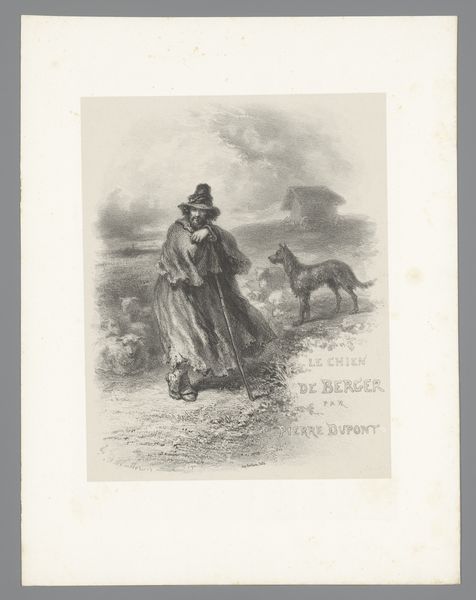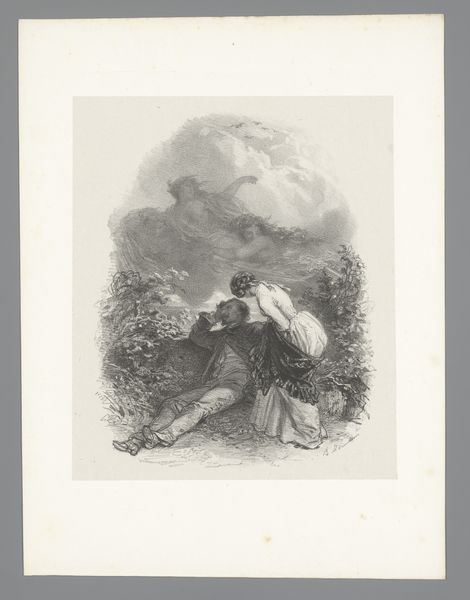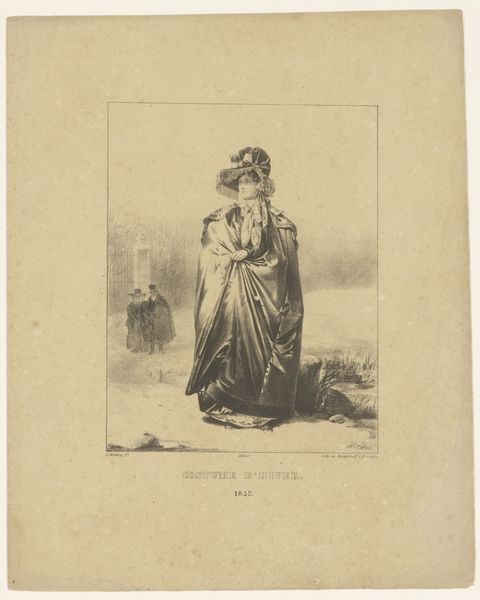
Schrijvende man zittend op een rots, op de achtergrond een groep mensen 1823 - 1873
0:00
0:00
drawing, print, engraving
#
portrait
#
drawing
#
narrative-art
# print
#
landscape
#
figuration
#
romanticism
#
history-painting
#
academic-art
#
engraving
Dimensions: height 360 mm, width 275 mm
Copyright: Rijks Museum: Open Domain
Curator: At first glance, I am drawn to the melancholic mood—it speaks volumes, despite the seemingly simple composition of the subject on a rock with pen in hand. Editor: That mood certainly resonates. This engraving is "Schrijvende man zittend op een rots, op de achtergrond een groep mensen," translating to "Man writing sitting on a rock, in the background a group of people," by Célestin Nanteuil, dating roughly from 1823 to 1873. What connections do you draw between this imagery and societal trends of the time? Curator: I see a distinct connection to the Romantic movement. The lone figure, isolated on the precipice, evokes the artist as a tortured genius. The landscape itself almost feels like an externalization of his internal struggle. I'm intrigued by the shrouded group in the distance. Is there a communal calling being rejected for individual reflection? Editor: Potentially. Considering Nanteuil’s involvement in Romanticism, we can certainly interpret the man’s solitude as a reflection of the artist’s perceived alienation from bourgeois society. Note the emphasis on emotion and subjectivity, common threads in the Romantic tapestry of that time. But what do you make of his attire? Curator: He is robed. Combined with the landscape and crowd beyond, I wonder if he represents a biblical figure, a prophet perhaps, removed from the bustle of daily life, seeking inspiration. It taps into our deep-seated cultural memory surrounding writers, connecting back to ancient iconography and literature. It's powerful, tapping into a very old artistic tradition. Editor: It’s also important to acknowledge how Romantic notions often sideline perspectives beyond the white male artist figure, centering individual struggles without deeply addressing broader structural inequalities. Perhaps looking critically at that legacy lets us connect historical art practices with conversations on equity and representation today. Curator: You've given me much to consider; reflecting on the position of the writer himself allows for new interpretive paths and cultural insights. Editor: And re-contextualizing familiar symbols offers pathways towards more nuanced cultural comprehension.
Comments
No comments
Be the first to comment and join the conversation on the ultimate creative platform.


